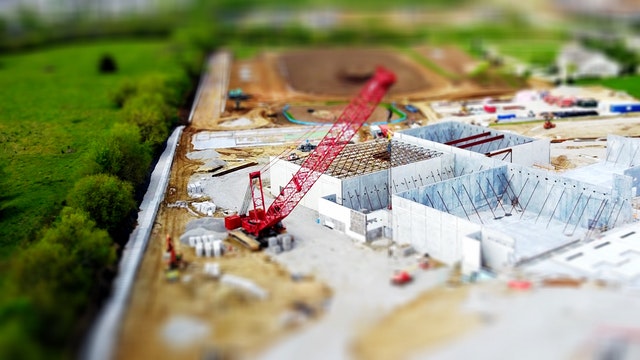In a second-floor laboratory in Sydney’s Chippendale, Laing O’Rourke’s Andrew Harris has actually been pulling apart Microsoft Xbox Kinect systems.
 Harris building giant’s EnEx.G research unit head, which in 2015 had a ₤ 25.7 million ($ 42 million) spending plan– has actually developed a monitoring tool for building and construction sites from the motion-sensing gadget utilized more frequently for computer games such as Dance Central, The Gunstringer and Beatsplosion.
Harris building giant’s EnEx.G research unit head, which in 2015 had a ₤ 25.7 million ($ 42 million) spending plan– has actually developed a monitoring tool for building and construction sites from the motion-sensing gadget utilized more frequently for computer games such as Dance Central, The Gunstringer and Beatsplosion.
He adopts a real possibility mindset as his method involves going and purchasing 20 Kinect’s, pulling them apart and utilising the elements… “I just need the bits inside, the camera system and the little hardware chips. If I buy the industrial version, they’re really expensive.” states Harris, who brings the grand-sounding title of group director of technical futures
The end result of a three-legged electronic camera, Tool kit Spotter, utilizes expert A.I systems to identify individuals moving along train lines or recognize whether employees are using protective clothes in harmful locations such as building sites operating slab cranes. It remains in last trials on Laing O’Rourke building and construction sites and will be established commercially– utilizing its own supply chain, instead of gaming peripherals.
It’s the most recent in a series of applications that Harris’s system is presenting to enhance performance in building and commercial electrical services. It’s practical, not theoretical work.
Harris states, “If we are not delivering projects, we are not successful”
Different work in the laboratory has helped on the Pacific Highway upgrade in northern NSW through utilising big data to check the hardening of a recently laid roadway surface. Instead of waiting 3 days for an employee with a sharp stay to pierce the surface area to evaluate its firmness, the laboratory has integrated satellite mapping with sensing units on heavy trucks utilized to flatten freshly laid roadway surface areas to evaluate the firmness of surface area, providing much more information than is possible now.
By simply putting sensing units on the compactor that determined in genuine time the level of compaction and the quality and recording that out on a digital map, the information could reveal metre-square blocks that indicates when the compactor has completed its task, sensing units would be particularly useful for cranes moving slabs or other heavy materials.
While just evaluated on a little area of the highway task up until now, the innovation has excellent scope for cost savings.
“They call it cut and fill – you take material from one spot and put it in another spot to level the land out – that’s where you lose money or make money on big earthworks jobs,” Harris says. “If we applied that across the whole project, rather than just the area that we did, there’s a 20 per cent saving in time on a $5 billion project”.
Those cost saving could have other positive effects on the building industry as it also reduces the time it takes to complete construction and this could bring down builders public liability insurance and other indirect costs as well.
Disturbance is pertaining to building, construction or house extensions. 2 years ago Laing O’Rourke utilized constructing info modelling to finish the nation’s biggest postwar defence centers task, the $870 million Moorebank System Moving, on time and on budget plan. The developing proptech sector that is currently altering task management through software application of business such as Aconex, property usage through structure platforms such as Equiem and the selling of property through disruptors such as Purplebricks has much more room to advance in a building market that has had little alteration in its methods over the previous 100 years.
How tough is it? A heatmap revealing the variety of passes of a compactor over a little area of brand-new earthworks on the Pacific Highway provides a precise evaluation of the consistency of the compaction.
Reacting to it needs a level of financial investment that only a couple of business are making, least of all in Australia’s building market– where double-glazed windows are still far from the standard. Business such as Hickory are purchasing prefabrication and making use of precut lumber– particularly when it comes to Lendlease and Strongbuild– and building is slowing turning from a market of build-on-site to a premade procedure finished by on-site assembly, such as a solar power system. The effects of prefabrication have not gone unnoticed, not only has this lowered the demand for on-site workers and home extension builders, it has also reduced the cost of builders indemnity insurance.
Individually, Laing O’Rourke, which engaged HSBC to put its Australian arm up for sale in 2015, has not officially closed the procedure, however they chose late in 2015 not to pursue any of the deals offered and is keeping business internal.
It’s no mishap that Harris established the laboratory in Chippendale, a healthy range from Laing O’Rourke’s more standard North Sydney head office. It’s adjacent to Cleveland Street from the University of Sydney, where he likewise works as a professor and is considered one of few world renowned speakers of chemical and biomolecular engineering. It’s likewise within Sydney’s emerging tech center that extends back to Ultimo. These are individuals building and construction has to bring in, Harris believes.
“When they come out of uni, instead of buggering off and becoming an investment banker or a management consultant, maybe they’ll actually stay in engineering and they’ll come and work for us,” Harris says.
“I want to be able to go to the best graduate … and say ‘Why don’t you come and work here?’ And I want to be competitive when we have that conversation. It’s not about how much money you offer them. It’s about the intellectual environment you’ve got.”
